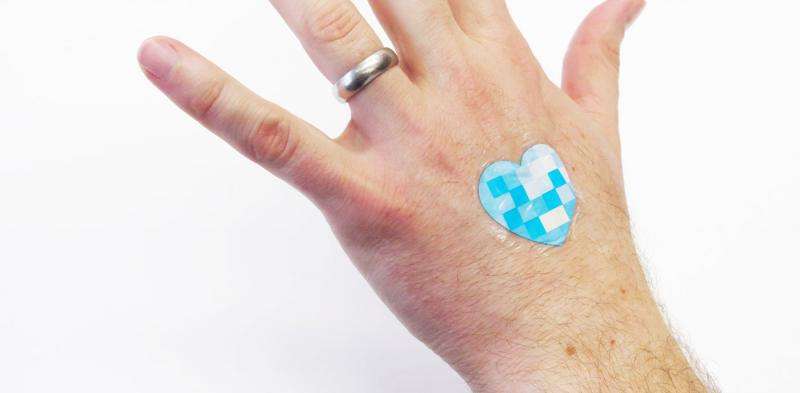January 7, 2016 weblog
L'Oreal turns to stretchable electronics for patch to monitor UV exposure

Is this the year that the cosmetics industry shows more signs of taking a wearable technology turn in their product portfolios?
L'Oreal, after all, has had a U.S.-based Technology Incubator which in 2014 came up with Makeup Genius, said Bloomberg, an application that turns a mobile device into a digital mirror. The idea was to enable users to try on L'Oreal cosmetics virtually.
This time, tuned with the CES show in Vegas, L'Oreal is showing its technology focus with a new product that does not involve any creams, lotions or powders.
L'Oreal is introducing a skin patch. The BBC said it will be launched in 16 countries. The patch is to monitor ultraviolet exposure.
It measures about one square inch in area and 50 micrometers thick, half the thickness of an average strand of hair. The BBC said it lasts for about five days.
How it works: The person takes a photo of the patch and uploads it to a mobile app to determine the amount of UV from exposure, said Bloomberg.
The patch has a photosensitive blue dye, said the BBC, which changes color when exposed to ultraviolet light.
My UV Patch, as it is called, is under the dermatological skincare brand, La Roche-Posay. The app will be available on both iOS and Android. The My UV Patch is expected to be made available to consumers later this year.
The product was developed by the L'Oreal tech incubator. This incubator is actually a team of 25 scientists and researchers, said the BBC, working in several cities around the world, including New York, Paris and Singapore.
Skin Cancer Foundation lists melanoma as the most dangerous form of skin cancer; growths develop when unrepaired DNA damage to skin cells (most often caused by ultraviolet radiation from sunshine or tanning beds) triggers mutations that lead the skin cells to multiply rapidly and form malignant tumors.
Guive Balooch, global vice president of L'Oréal's Technology Incubator; commenting on the skin patch, said, " Connected technologies have the potential to completely disrupt how we monitor the skin's exposure to various external factors, including UV."
Balooch lends a perspective on the umbrella term wearables. "Today all the wearables you see are jewelry or wrist bands - but not wearable in the sense that you wear them anywhere on your body," Balooch told the BBC.
Quoted in The Telegraph, he spoke about stretchable electronics' promise in the industry: "We're excited to be the first beauty company entering the stretchable electronics field and to explore the many potential applications for this technology within our industry and beyond."
In June, Popular Science had reported that a team at the University of Illinois at Urbana-Champaign were pioneering flexible wearable electronics, designed to continuously collect and transmit data from the human body. They had teamed up with L'Oreal USA to help researchers and consumers better understand human skin, said the report.
"The circuits are made from narrow strands of metallic conductors like gold, interwoven with and embedded in 'nanoribbons' of silicon," said the report, and "all the data that the devices collect can be sent via Bluetooth to a computer or smart phone, provided that it's close enough."
© 2016 Tech Xplore





















